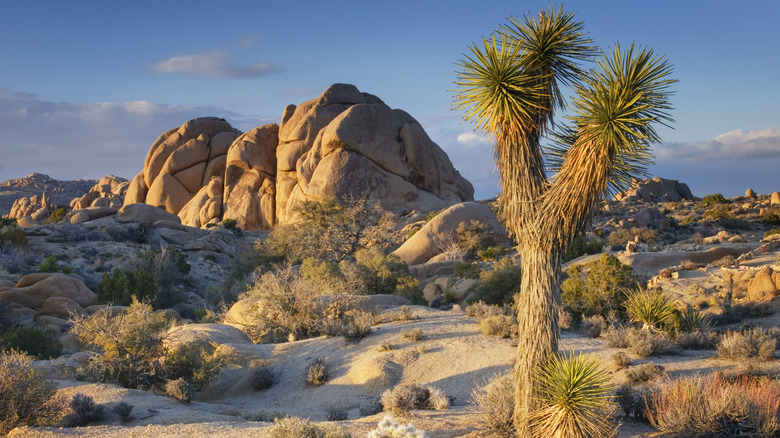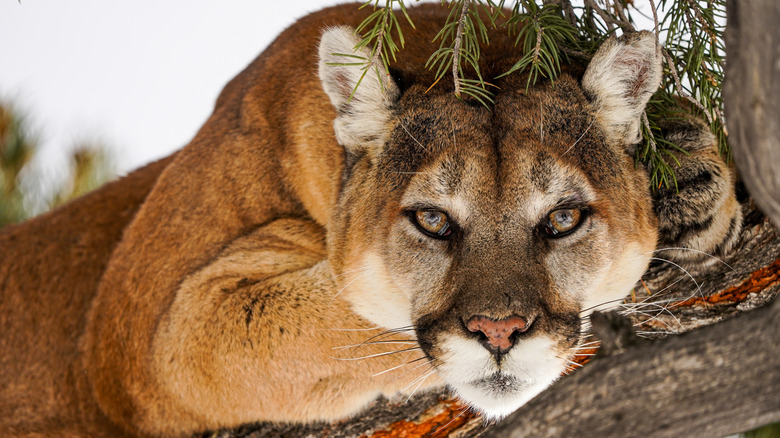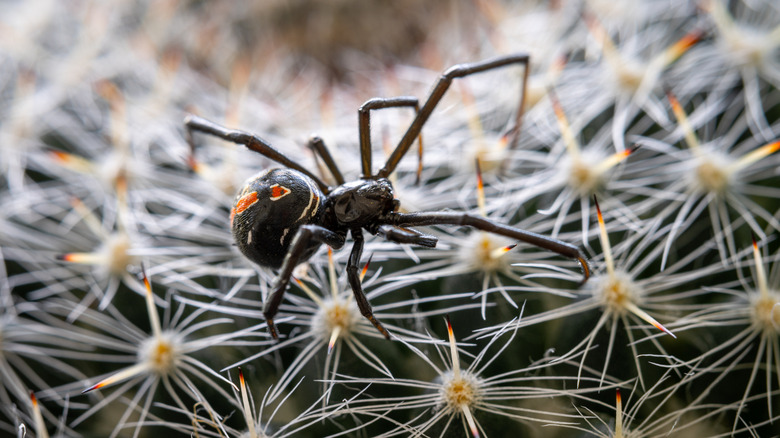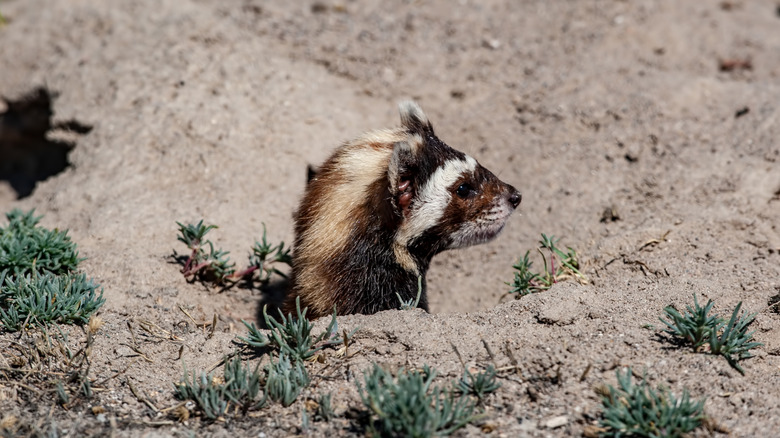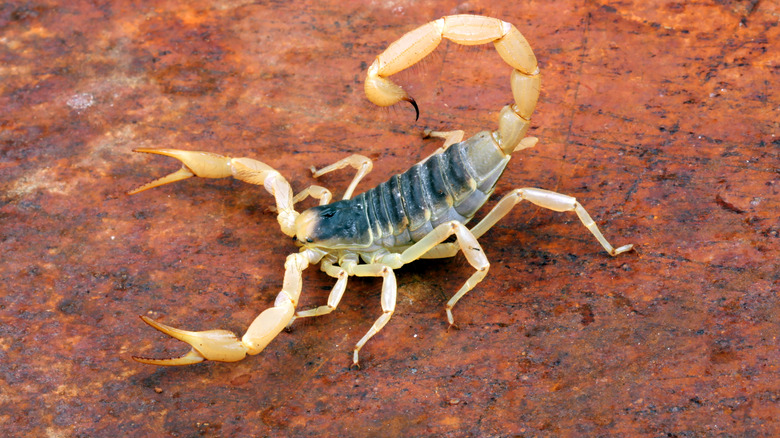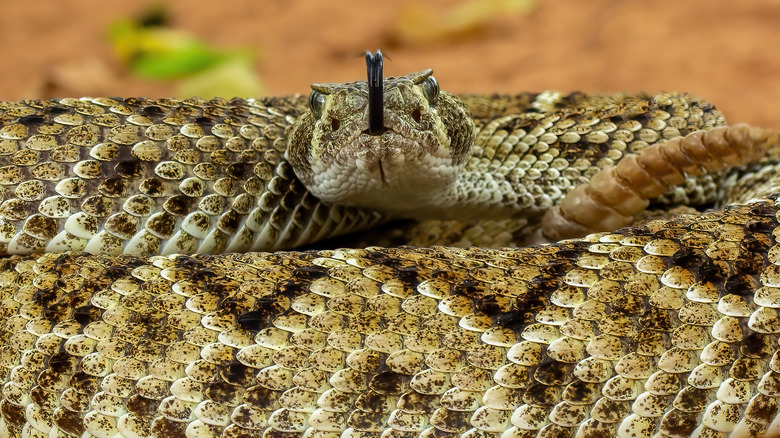Creatures To Beware Of When Adventuring In Joshua Tree National Park
We may receive a commission on purchases made from links.
Joshua Tree is one of those national parks that everyone should experience at least once. The unique trees give this travel destination its name and show visitors that even a desert has beauty. It also inspires an urge to explore and learn more about nature with every step. However, though the park is beautiful, it is wild, and the animals that make Joshua Tree their home remind visitors to always be on their guard.
From heatstroke to a nasty fall, there are plenty of chances to get injured in any national park, including Joshua Tree. Animals, large and small, also pose a threat to visitors. Those living in the area are made for tough conditions, and have had to evolve to be dangerous and sturdy to survive.
Unfortunately, this means that they can pose harm to unaware visitors. Bites, stings, and other interactions with any of these animals are unlikely to lead to death, but injury, pain, and a visit cut short are potential complications if you don't know which animals to be wary of in Joshua Tree.
California mountain lions are some of the biggest predatory animals in Joshua Tree
The California mountain lion (Puma concolor californica) is a subspecies of puma found in parts of the West, including Joshua Tree National Park. Currently, there is a bit of a debate on whether this group is actually its own subspecies or just part of the main group. As of right now, there are only two current subspecies considered valid, which are the Puma concolor concolor found in South America and the Puma concolor cougar found in North and Central America.
Either way, there are mountain lions present in Joshua Tree. They are relatively uncommon, but can pose a big danger for those who come across one. Mountain lions are considered the fourth largest of all wild cats. Generally, there isn't a cause for alarm, as long as you know what to do if you ever come across a mountain lion. Nevertheless, there is no denying that their large teeth and claws pose a serious threat if agitated.
You may not even encounter one. Not only are they uncommon in the Joshua Tree National Park, but they try to stay away from visitors. Since they usually notice people first, mountain lions are quick to get out of the way without a hiker even realizing there was one nearby in the first place. However, in some rare cases, like if these cats are hungry or trying to protect their young, they may try to attack you. Try to make yourself as big and as loud as possible, and, if all else fails, fight back with whatever you have to protect yourself.
Black widows are often hiding in plants
Joshua Tree National Park is also home to a few small — but no less dangerous — creatures. One example is the notorious black widow (Latrodectus mactans), which is one of the most dangerous spiders in the world. Females are the most recognizable, with their large black bodies and the bright red hourglass shape on their abdomen. Males are a little harder to recognize, as they are generally brown or gray, with small red spots. However, males are incredibly reclusive and are rarely seen by people out in the wilderness. Thankfully, even if you come across a male black widow, you don't have to worry, as they aren't considered dangerous.
Females are a different story. The venom they carry inside their fangs is said to be 15 times stronger than that of a rattlesnake. A bite from these spiders can be dangerous, but are actually rarely deadly, despite what you might have heard growing up. Roughly four to eight people die a year from black widow bites, which is far less than the 53 who die due to bee stings annually. This being said, if a pet, someone who is immunocompromised, or a child is bit by one, it's best to take them to a hospital right away. Even if you are not, it's a good idea to head straight to an emergency room, in case you react negatively to the bite.
The chances of you even being bit are pretty rare. In the United States, fewer than 3,000 people report experiencing a black widow spider attack annually. That's because they aren't very aggressive and only bite when they feel there is no other choice.
Western spotted skunks roam Joshua Tree and release a smell you want to avoid
While Western spotted skunks (Spilogale gracilis phenax) aren't likely to hurt you, it's still a good idea to be aware of them when wandering through the park. These skunks are relatively uncommon in Joshua Tree, but you can still spot one on occasion, especially in rocky canyons close to evening, as they are a nocturnal species. If you miss catching sight of these little creatures, you can often figure out they are nearby thanks to their strong smell.
This odor is where they pose a risk to people. If a Western spotted skunk feels threatened or if you're moving too close to their young, they will warn you, or your pets off. Like any other skunk, they do this by spraying a strong-smelling chemical on whatever danger is too close. The smell clings onto skin and fur, and takes a lot of work to clean up.
Thankfully, though skunks are known for spraying anything that gets too close, they actually only do it as a last resort. It isn't easy for skunks to build up their defensive spray, and they try to use it only when there is no other option. This means, if you pay attention, you can watch for warning signs that a skunk is about to spray, including stomping, puffing of their fur, and hissing. If you see any of these behaviors, it's a good idea to take a few steps back, or find an alternate route.
Scorpions are abundant and can sting an unsuspecting hiker
There are potentially a couple of scorpion species found in and around Joshua Tree National Park. The most common is the giant desert hairy scorpion (Hadrurus hirsutus). Despite its name, and the fact that it's the largest species in all of North America, they aren't abnormally massive. They only get up to somewhere between 4 and 7 inches in length.
Most scorpions can deliver a painful sting, but they are rarely fatal. In fact, there is only one in the entirety of the United States that has a potentially deadly sting, which is the bark scorpion (Centruroides sculpturatus). So, if you're wondering what to do if you get stung by a scorpion, generally the first step is to calm down. You want to be thinking clearly when you work to reduce the pain and make sure that you aren't reacting negatively to the venom.
Giant desert hairy scorpions are venomous, but they are pretty weak to humans. Those who have been stung often compare it to a bee sting. Additionally, the giant desert hairy scorpion is not an aggressive species, and only attacks to defend itself when it feels cornered. Of course, no one wants to get stung, no matter how minor. Keep a close eye on cracks in rocks, small holes in the earth, and caves, especially in the desert and on the edges of woody areas, as this is where they are most commonly found.
Joshua Tree National Park is home to several species of rattlesnakes
There are several species of rattlesnakes found in Joshua Tree; the Mojave Desert sidewinder, Red Diamond rattlesnake, Colorado Desert sidewinder, Mojave green rattlesnake, Southern Pacific diamondback, Speckled rattlesnake, and Western diamondback.
If your fear of snakes is keeping you away from visiting this national park, you're in luck. Because of the cooler weather in the fall and winter, snakes undergo a process called brumation, where they tend to slow down their activity on colder days. This means if you travel from November to March, you have a much better chance of avoiding these dangerous slithering creatures entirely. Additionally, staying on well-established trails reduces your risk of running into a snake, or at least makes it easier to see when one is near you. Snakes can often hide in underbrush and rocks, so it can be hard to see where they are resting. Wearing sturdy boots, loose-fitting pants, and thick socks also helps prevent snake bites, and therefore the venom, from making it to your skin. Before you begin your trek, you should take the time to learn what to do if you run into a rattlesnake while hiking, so you can be prepared.
If you're going in the warmer months, you'll want to be cautious of encountering snakes while exploring the park. The sites in front and around you are stunning, but don't forget to pay attention where you're putting your feet. If you bring your pet along with you to hike, you also need to be careful of where they are walking and sniffing around. It may be a good idea to train them to avoid snakes, too.
